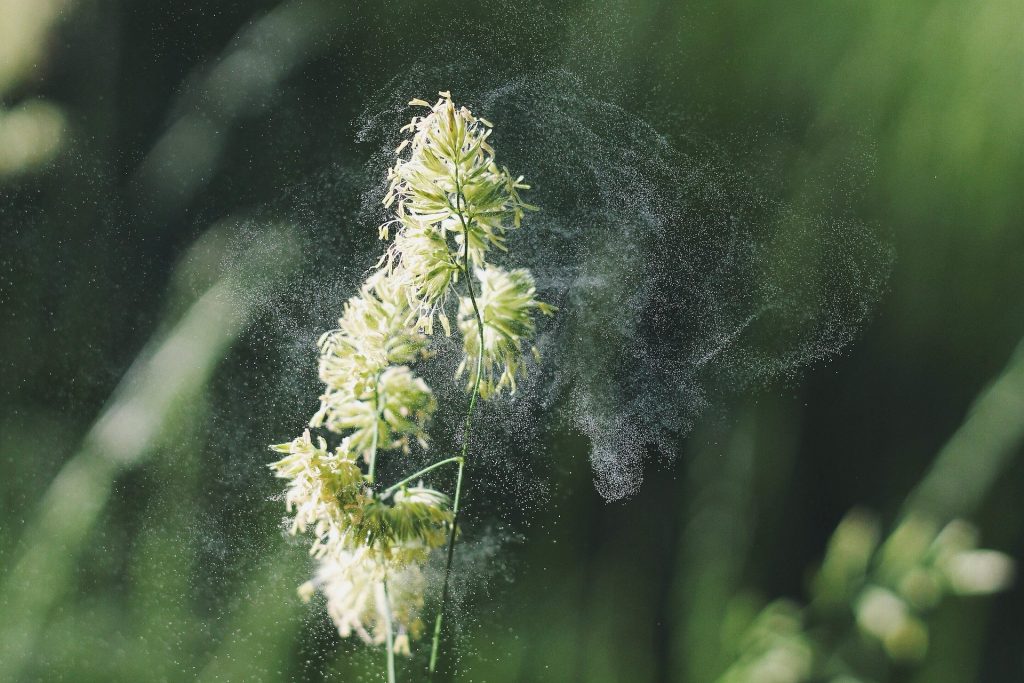A Seasonal Guide to Allergies

Do you feel like you’re affected by allergies year-round? You’re not alone! Hay fever affects about 6.1 million children and 20 million adults. While many people associate allergy season with the fall or spring, few know there are different allergens that can make your symptoms flare-up year-round.
Allergic rhinitis, also known as hay fever, is a type of allergic reaction that occurs when the immune system overreacts to something in the environment, such as pollen. Often, symptoms of allergies include sneezing, runny or stuffy nose, coughing, fatigue, itchy or watery eyes, or a headache.
However, according to the Asthma and Allergy Foundation of America, eye allergies are also quite common and can be known as “allergic conjunctivitis.” Allergic conjunctivitis is a common reaction when indoor and outdoor allergens get into the eyes. You may not realize it, but eyes are an easy target for allergens and irritants because they are exposed and sensitive. Despite the name, allergic conjunctivitis is not contagious.
To prepare you for allergens that may irritate your eyes, keep reading to learn common eye allergy symptoms, specific allergens that you may encounter throughout the year, and ways to treat or prevent these allergies.
Symptoms of Eye Allergies
Some common eye allergy symptoms include redness, itchiness, a burning sensation, watery eyes, swollen eyelids, or feeling like there is dirt or grit in your eyes. It’s important to note that if you or a loved one are living with keratoconus or have a family history of the disease, avoid rubbing your eyes when allergies make them irritated!
While the exact cause of keratoconus is unknown, it is believed that genetics, the environment, and the endocrine system all play a role, and that eye rubbing is a risk factor that can contribute to the development of keratoconus. In addition, even if you don’t have keratoconus, rubbing your eyes causes them to become more irritated.
Seasonal Allergy Guide
Below you will find a seasonal guide to help you understand why you may experience allergy symptoms outside of “allergy season.”

- Winter (December-February) In the winter months, there is often less pollen (if any at all) floating around, so people may notice that their allergy symptoms are non-existent. However, if you’re allergic to dust, mold, or pet dander, winter allergies can be just as bad as the spring and fall months. Christmas trees can be another allergy culprit, as they can cause sneezing because of the microscopic mold spores that can hide in branches. If you live in an area where the climate is colder in the winter, February may bring tree pollen, which begins to cause allergy flare-ups.
- Spring (March-May) Tree and grass pollen levels are high in the spring. Once flowers start to bloom, pollen levels are even greater, causing allergies to become the worst for many people this time of year. During springtime, you may want to start keeping an eye on the pollen count, because the higher the count, the worse your allergies may be.
- Summer (June-August) As the weather gets warmer and you spend more time outdoors, beware of the effect grass pollen can have on your eyes. The temperature, the amount of rainfall, and the time of day can all influence whether or not you experience allergy symptoms, so be prepared to adjust your plans accordingly. While grass pollen may start to decrease by the end of the summer, fungus spores and seeds can cause symptoms as well. Mold spores usually peak during hot, humid weather, and can grow on fallen leaves, compost piles, grasses, and grains.
- Fall (September-November) Ragweed is the most common cause of fall allergies. Allergies caused by ragweed can begin in August/September and continue through October/early November. These pollen grains are lightweight and can spread easily, especially on rainy/windy days. Additionally, seasonal rain/winds can result in continued mold spores. If you suffer from year-round allergies, November may be the only time that your allergies feel almost non-existent and you can enjoy the crisp outdoor weather without eye irritation.
How to Treat or Prevent Eye Allergies
If you suffer from eye allergies, don’t fret! Like all types of allergies, there are some tips you can follow to treat, prevent, or minimize the effects of your symptoms. Some common ways to treat eye allergies include saline eye drops or over-the-counter medicine. However, if you or a loved one are still struggling with allergy symptoms, there are prescription treatments or allergy shots that may offer relief. You can talk to a doctor or visit an allergist to determine what is causing your symptoms.
To prevent eye allergies, try to avoid common triggers, wash your hands regularly, invest in an air purifier, avoid touching or rubbing your eyes, clean your home, clothes, and bedding regularly, wear glasses/sunglasses outside to reduce the chance of pollen getting into your eyes, and keep windows closed during days with high pollen counts.
Stay Prepared!
As we move into the next season, we want you to be as prepared as you can to identify and manage your allergy symptoms. If you notice that your eyes start to become itchy or red, allergies may be the reason. It’s important to know that some simple changes or available treatment options may help reduce symptoms. And remember, whatever you do, don’t rub your eyes!
For more information on keratoconus and general eye health, visit our website.
To find a doctor near you to get screened for keratoconus, use our locator tool.